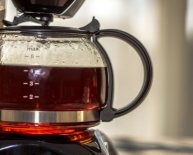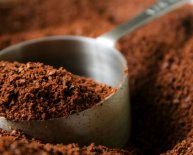
What coffee to use for espresso?
Generally, the goal of espresso mixing is different through the aim of filter coffee blends (and some may argue that you can find blends certain for French Press brewing or even for providing with cream/milk). Drip coffees might be blended for complexity or for balance, but an espresso combination frequently must certanly be combined for balance or specific varietal qualities that would be favorable in a drip coffee might overwhelm the espresso plant.
Many espresso blends depend on one or a few high quality Brazil arabicas, some washed, some dry-processed. They often incorporate some African coffees for winey acidity or enzymatic flowery /fruitiness, or a higher grown Central United states for a cleaner acidity.
Dry processed coffees is accountable for the appealing crema in the glass, among various other technical aspects when you look at the removal process. Wet-processed Central People in the us add good fragrant characteristics. Robustas, or coffea canephora, are used in less expensive combinations, many good ones, to boost human body and create crema. Additionally they add a particular bite toward glass. The idea that real "continental" espresso blends have actually Robusta? Nonsense! Actually the coffee samples from small Italian roasters I've had (in green form) seem to be really mild, sweet combinations with about 40% Brazil Dry-process, 40percent Colombian and 20per cent+ Centrals, like Guatemalan. For bite, syrupy or winey fresh fruit, and earthiness you can make use of a DP Ethiopian. Its enjoyable to try out with Robusta but I personally dislike it excessively beyond experimentation and I in person don't enjoy having even more caffeinated drinks in my own coffee than is necessary.
A Colombian-based espresso combination provides a sharper, sweeter taste but wont lead to the maximum amount of crema production.
You are able to blend because of the seat of your jeans (not recommended) or create your procedure for setting up the coffees while the percentages rational. Start by establishing the bottom, the back ground when it comes to taste and a coffee that delivers the type of human body, roast flavor and crema you prefer. I would recommend Brazils, although any sweet coffee with mild acidity and surface when you look at the mouthfeel are viable choices.
Rehearse roasting this base coffee to various quantities of roast, and pulling right shots of espresso. Get familiar with this cup and imagine what you would like to improve with it.
Do you want it to be sharper and sweeter, with additional aromatics: maybe you may wish to add main American coffees. Watch out with percentages above 25%, especially if you prefer a lighter espresso roast. You'll be losing some crema and the body.
Do you want more human body and sweetness: use a clear Indonesian like a Sulawesi or a premium Sumatra. You are dropping some brightness as well as also light a roast degree some of the earthy or organic characteristics becomes sharper. You are able to rise to 50% with one of these and some are great also at 100%, however if you might be mixing it with an other coffee which have more delicate functions (including flowery wet processed Ethiopian) you had been hoping to highlight, I would personally perhaps not make use of an excessive amount of these coffees for threat of overwhelming them.
Do you want a natural aggressive bite plus pungency: attempt a dry-processed Ethiopian. Some are better plus aromatic with fruitiness and wineyness. Some have actually great pungency into the darker roasts, and are also fruitier when you look at the less heavy roasts. These create great crema. We frequently enjoy straight shots of these coffees, but ensure that it it is to 25per cent roughly in most blends.
Do you want spicy pungency: decide to try a Yemeni coffee. These add wineyness too, and great crema. I keep this to 50percent or less (usually 25% roughly) in blends. A number of the nicer ones have an aromatic sandalwood note that when balanced with the winey acidity create actually rich and exotic single origin espresso.
Are you wanting severe bite: attempt an old coffee, a Monsooned coffee (Indian or better yet the Sulawesi Rantepao) or Robusta. Aged coffees and Monsooned add certain cool preferences that you might love, or simply hate. You merely must provide them with a go to learn but that is the main fun. Robusta - I would personally perhaps not go indeed there if you do not have also. Personally do not like the included caffeine they bring. They increase crema, however also need to have them below 20% inside blend, i never ever go above 15% together.
Arabica vs. Robusta? Arabica coffees (this means every coffee we sell except those in the extremely end of your number in Premium Robusta heading) create an excellent crema, with great aromatics, and a lighter brown-yellow color. Robusta coffees (through the species coffea canefora) make a larger level of crema, but it has bigger "bubbles" and dissipates quicker. Robusta has actually about 2x the caffeinated drinks of arabica, 2.2 to 2.4percent versus 1.1 to 1.3percent in arabica. It could have a really rubbery-medicinal flavor if you have an excessive amount of in espresso blend. At a decreased percentage, 10% to 15per cent, it provides a pleasant bite and it is negative features is minimized.
Perhaps you'll discover that the coffee you decided on for a base and sometimes even one of many accents are attracting you as an espresso by themselves. Solitary Origin Espresso is now more predominant as individuals are tinkering with what an espresso can or should-be. Contemplating espresso simply as a brewing technique instead of a beverage in and of itself with predetermined variables or "rules" as to what it really is consists of and what it must taste like can open the entranceway to numerous non-traditional and often interesting tastes in a shot. But you will find definitely coffees having an excessive amount of one high quality or another that in an espresso extraction aren't as enjoyable if you ask me for the reason that it high quality may become exaggerated.

















